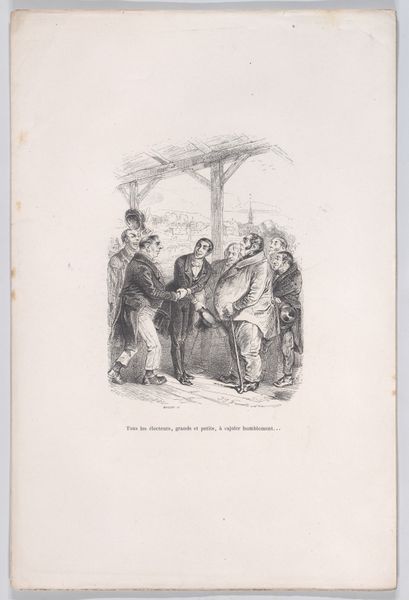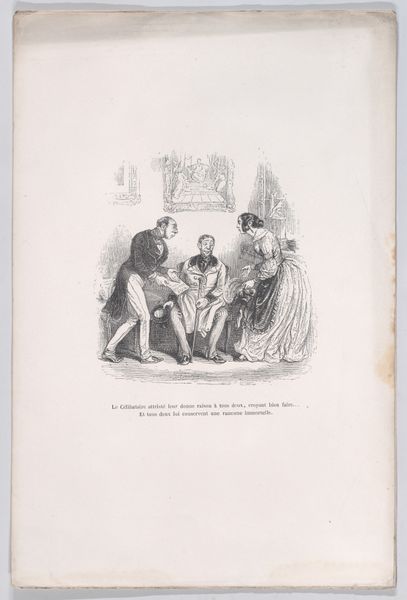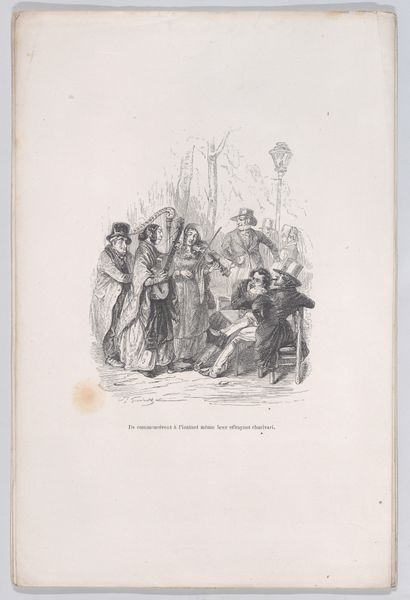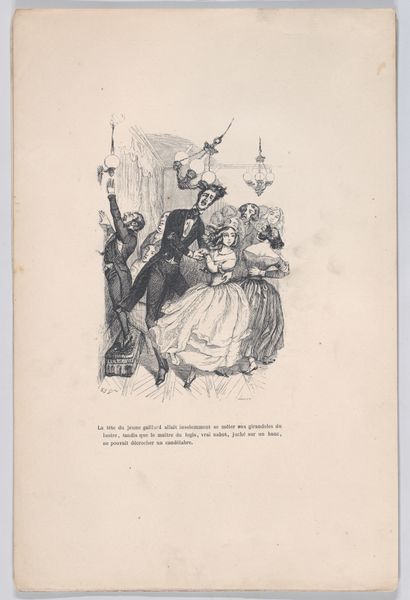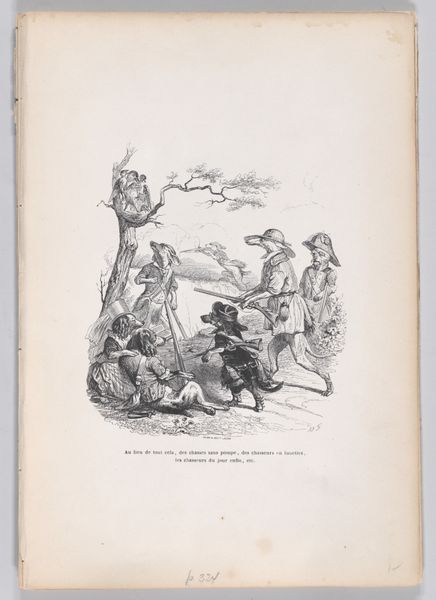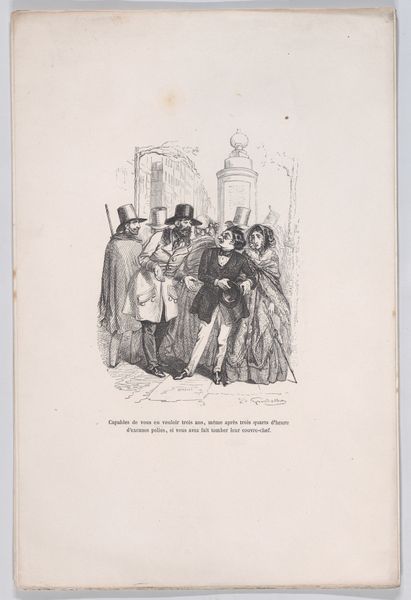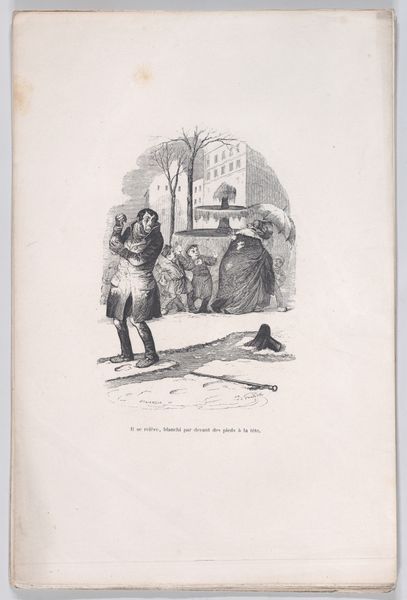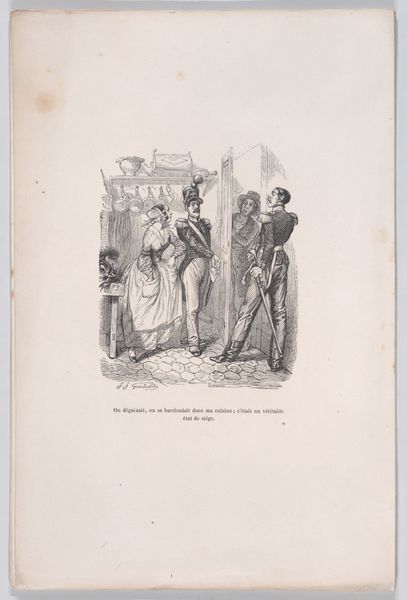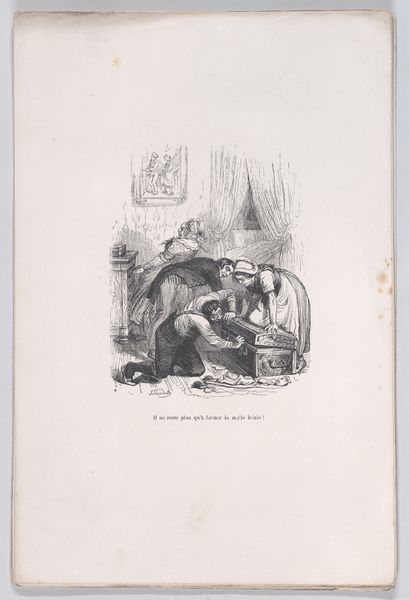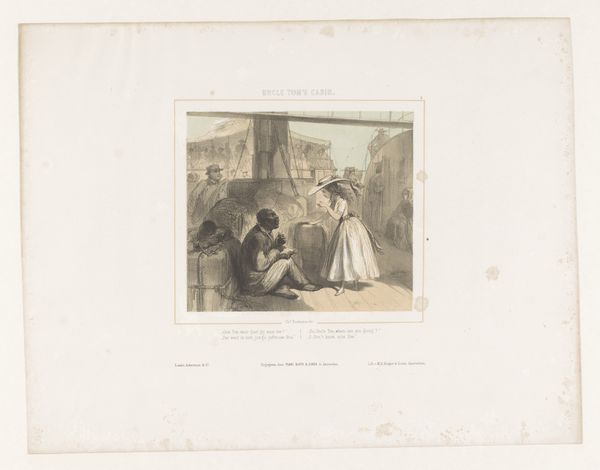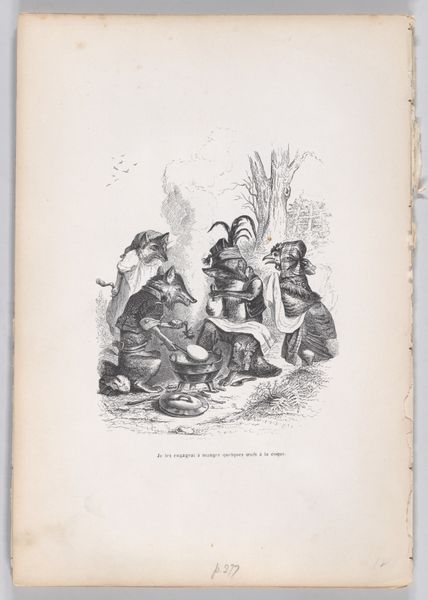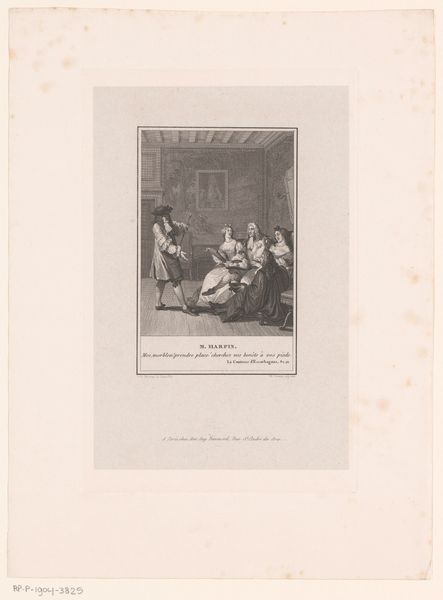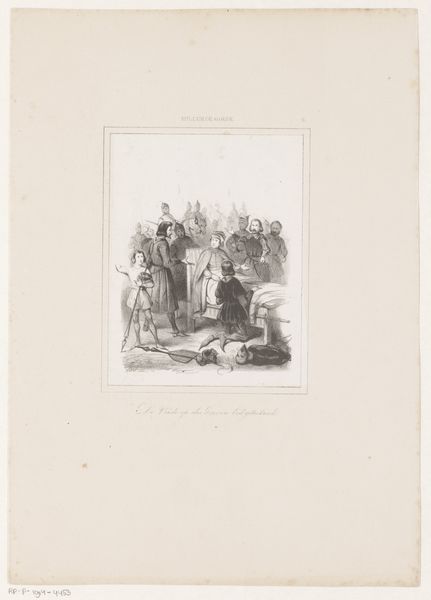
"He rose like those small sea monsters that decorate the fountains." from the Little Miseries of Human Life 1843
0:00
0:00
drawing, print, engraving
#
drawing
#
narrative-art
# print
#
figuration
#
romanticism
#
genre-painting
#
engraving
Dimensions: Sheet: 11 1/4 × 7 1/2 in. (28.5 × 19 cm)
Copyright: Public Domain
Curator: Welcome! Today, we're looking at an engraving by J.J. Grandville from 1843, a piece titled ""He rose like those small sea monsters that decorate the fountains,"" taken from his series, *Little Miseries of Human Life*. Editor: My immediate impression is one of childhood angst and societal pressure, all captured in monochromatic tones. It feels simultaneously quaint and unsettling. Curator: Absolutely. Let's consider the composition. The artist uses strong lines to define the figures, focusing particularly on contrasting the agitated child with the surrounding adults. Notice how their stiff posture emphasizes a social dynamic. Editor: Indeed, there's a distinct visual hierarchy here. The figures in the background appear almost like a Greek chorus, observing the spectacle. Who are these arbiters of social convention and why does their presence provoke such intense emotion? The image suggests there’s little space for vulnerability and how expectations mold experiences. Curator: Good point. Semiotically speaking, the artist leverages this juxtaposition to heighten the sense of alienation, creating a scene teeming with visual symbolism: the figures represent strict Victorian expectations. Editor: Thinking about Grandville’s time, what did "miseries" signify? Was he merely highlighting bourgeois sensibilities, or making a statement about class dynamics? The engraving's detail hints at an entire system of social regulations restricting individuals in public life. Curator: I'd argue Grandville aimed to lay bare the human condition, not only indicting certain class structures but drawing on universally felt tensions. The artist's technique, characterized by precise engraving, heightens emotional impact. Editor: Maybe so, but it would be myopic to read this engraving without taking social realities into account. Children experiencing harsh rules or social ostracization is more about socio-economic structures than innate human nature. Curator: I suppose we’ve arrived at different points about this piece. I have certainly appreciated examining this from the structural side today. Editor: Yes, I leave with a lot to consider myself about childhood expression in this period. Thanks for sharing your observations.
Comments
No comments
Be the first to comment and join the conversation on the ultimate creative platform.
